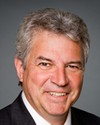The initial report of the electoral boundaries commission proposed no changes to my riding of Sault Ste. Marie. That was anticipated. There should not have been any changes to my riding of Sault Ste. Marie. The population was 89,000, which is well below the provincial quotient already.
The final report of the boundaries commission proposed changes to the riding of Sault Ste. Marie and reversed almost every other recommendation it had initially made with respect to Sudbury, Timmins—James Bay, Algoma—Manitoulin—Kapuskasing, and Nipissing-Timiskaming.
The reasons for the reversal of those changes were really twofold. The commission determined that, based on consultations in those communities, there was no longer a community of interest. That was evident in Sudbury, Timmins—James Bay, Algoma—Manitoulin—Kapuskasing, and North Bay, and they also stated that there was inappropriate involvement by two members of Parliament.
A quotation from the report plainly and simply stated:
The advice received at those public hearings, combined with the inappropriate involvement of at least two Members of Parliament, persuaded the Commission to conclude that the status quo, with a few minor boundary adjustments, is the best solution it can achieve for Northern Ontario.
One of those minor boundary adjustments was to remove a portion of the riding of Sault Ste. Marie and place it within the riding of Algoma—Manitoulin—Kapuskasing.
Based on doing that, a hearing was conducted in Sault Ste. Marie. That was probably the final hearing that was conducted. It was thrown together fairly hastily, and it was done on a Monday morning, as I recall, at 11 o'clock. I think there were 12 people in attendance at the hearing. It was very clear from those in attendance that they do not agree that their community of interest falls along Highway 17. It's very clear, and they were very persuasive that their community of interest is in fact Sault Ste. Marie, without a doubt. Many of them commute to Sault Ste. Marie. They do their banking in Sault Ste. Marie. They do their shopping in Sault Ste. Marie. They work in Sault Ste. Marie at Essar Steel Algoma and various other employers.
I should point out that those people in attendance were representing other individuals as well. They were there representing people who couldn't come. It's my understanding that there were petitions presented, stating that they want to remain in the riding of Sault Ste. Marie. There were resolutions passed by three municipal townships, stating that they wanted to stay within the riding of Sault Ste. Marie.
It was not political at all. I might add that one of the resolutions came from Jody Wildman of St. Joseph Island, who is the reeve of that part of the Island. He is a well-known NDP supporter. His father, Bud Wildman, was the member of provincial parliament for the longest time. This is not political in any way, shape, or form. He himself said that St. Joseph Island should remain as part of the riding of Sault Ste. Marie.
The second point I want to make is just in terms of service to constituents. All these places that are removed are within a 40-minute drive of Sault Ste. Marie. The way it's happening now, if they have to become a part of the riding of Algoma—Manitoulin—Kapuskasing, whose riding office is housed in Elliot Lake, the result will be an-hour-and-a-half to two-hour drive for many of these constituents to go to a constituency office, when many of them are in Sault Ste. Marie on a weekly basis as it stands.
My final argument is that, if the commission allows this to move forward after it has openly recognized that there was inappropriate involvement by two members of Parliament, it is condoning that involvement and in fact rewarding it, which to me is an insult to those constituents in the riding of Sault Ste. Marie who are presenting the exact same arguments that the other ridings presented in terms of community of interest. The boundary commission is refusing to accept the community of interest argument in the riding of Sault Ste. Marie, but it is in the others.
In terms of a solution, I believe a much better solution, given the geographic size of Algoma—Manitoulin—Kapuskasing at approximately 100,000 square kilometres, is for the commission to invoke the extraordinary circumstances rule in the act to accommodate a population below the maximum negative variance from the provincial quota, similar to what it has done in many ridings, including Kenora. That is a much more reasonable approach, and that is the solution I propose.
Thank you, Mr. Chair.

